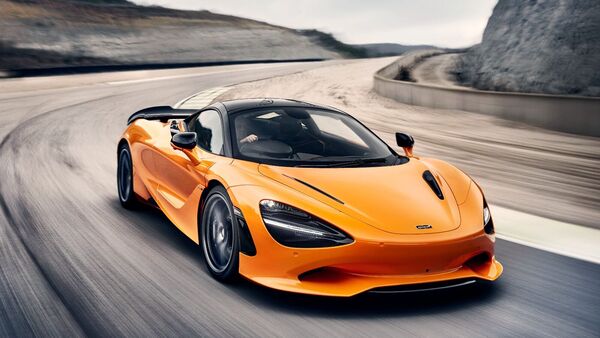McLaren hasn’t confirmed the project publicly, but the whispers are consistent: this will be McLaren’s first four-door, five-seat production model.

View Personalised Offers on
For a company that once swore allegiance to low-slung supercars and obsessive weight-saving, McLaren’s decision to build an SUV feels a bit like seeing a long-distance runner suddenly eye a wrestling ring. But the brand seems ready for that leap. A new model, internally called P47, has been quietly shown to global dealers, pointing to a 2028 debut. And if early impressions are anything to go by, McLaren is preparing for its most dramatic departure yet.


A four-door McLaren?
The British marque hasn’t confirmed the project publicly, but the whispers are consistent: this will be McLaren’s first four-door, five-seat production model. The design sketch reportedly shown to dealers paints an SUV that is not timid about its presence, a sculpted, muscular silhouette, split headlights tucked flush into the body, and a noticeable roof-spine tapering into a large rear spoiler.
What raised eyebrows was the size. This isn’t a compact experiment. Think more along the lines of a performance-leaning Cayenne Turbo GT, big stance, broad shoulders, and styling that still tries to claim some supercar lineage.
For a brand as tradition-bound as McLaren, that’s already a tectonic shift.
Hybrid V8, not full EV
Interestingly, while most luxury brands are electrifying their flagship SUVs, McLaren is reportedly steering toward a hybrid V8 with all-wheel drive. The reasoning appears surprisingly down-to-earth: dealer-level feedback suggested that McLaren customers aren’t convinced about a fully electric McLaren SUV just yet.
This means the P47 will not share the carbon monocoque platforms that underpin the brand’s supercars. A more conventional architecture, and likely a heavier one, will form the backbone of this model. That also means McLaren will need to walk a delicate line between performance credibility and real-world usability.
But the hybrid approach does hint at something else: McLaren isn’t abandoning internal combustion in its most ambitious new project. Not yet.
The strategic backdrop
McLaren is in the middle of a broader restructuring, including new investment from Abu Dhabi-based CYVN Holdings. That financial bolstering seems to have opened the door for portfolio expansion, the type that invites long-term stability rather than just headline-grade horsepower wars.
The global performance-SUV segment isn’t a novelty anymore. Ferrari has already crossed the boundary with the Purosangue. Lamborghini, Aston Martin, Porsche, and even Lotus have carved out high-riding interpretations of their brands. For McLaren, entering this space feels less like an indulgence and more like a necessity.
And in its own understated way, McLaren appears to have accepted that reality.
What this could mean for India
India has shown a steady appetite for ultra-luxury SUVs, the sort that cost north of ₹3 crore and still find homes with surprising regularity. A McLaren SUV would complement that market almost seamlessly.
The hybrid V8 strategy could actually work in McLaren’s favour here. Full EV adoption in the top end of the market is still cautious, infrastructure remains patchy, and customers who spend this kind of money often prefer visceral, mechanical engagement over silence.
But pricing remains the big unknown. Import duties on large-capacity engines aren’t forgiving, and the question is whether McLaren will treat India merely as a halo market or attempt a more structured entry around the SUV.
Check out Upcoming Cars in India 2025, Best SUVs in India.
First Published Date: 14 Nov 2025, 09:28 am IST


